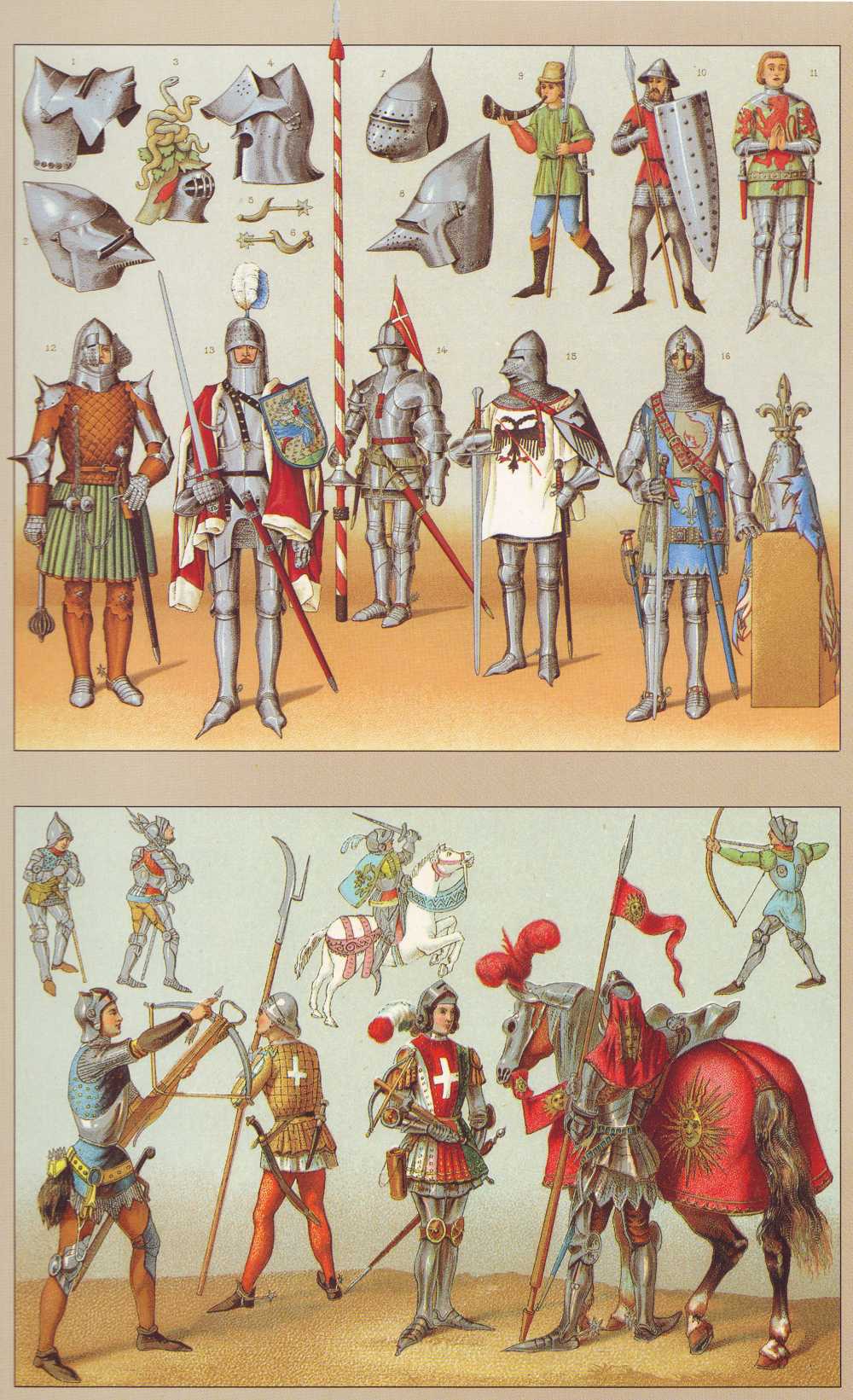
Try Amazon Audible Premium Plus and Get Up to Two Free Audiobooks
THE HISTORICAL ENCYCLOPEDIA OF COSTUME
ALBERT RACINET
THE CLASSIC WORK OF THE 19TH CENTURYp144-145

AS MILITARY TECHNOLOGY ADVANCED and new tactics evolved, chain mail started to give way to plate armour. However, this increase in weight gave rise to a new trend. Shock troops, such as the heavy cavalry, continued to wear heavy armour, but now some horsemen and the majority of foot-soldiers began to wear less armour, in order to increase their mobility.
1.1, 2, 4, 7 & 8 Helmets. 4 & 7 are English and date back to the end of the 14th century.
2.9 & 10 Men of the Grand Guard of the army of Charles VII. These guards took their name from the weapons they carried, and as they abandoned the mace and took up the bow and arrow, they became known as archers. The white cross was the French national emblem, as opposed to the red cross of England.
On his entry into Rouen in 1449, Charles VII was followed by his Grand Guard of archers and cross-bowmen. According to Mathieu de Coussy, they wore: "sleeveless hoquetons coloured vermillion, red and green, and decorated with gold, with plumes in matching colours."
1.12 A soldier from the second half of the 14th century. The use of leather combined with iron marks a transitional period, which follows the chain mail hauberk and precedes perfect armour plating.
1.13 Charles d'Orléans, who lived in the 15th century during the reign of Charles VII. The metal suit of armour completely covers the body, and greaves even cover the heels of the iron shoes.
1.14 A knight wearing a type of armour known as xaintrailles at the beginning of the 15th century. His iron helmet has a jutting edge that goes right the way round. This style of military headdress can be seen on Greek and Roman monuments. In the 12th century it was made of leather; by the 13th century it was made of iron and worn over a hood of chain mail.
1.15 A soldier from the period of Charles V.
1.16 The armour of the Dauphin, the son of King John who became Charles V. The variety of armour in this period was a result of the rivalry between two methods of protection: plate armour and chain mail.
Armour plate had not yet been generally adopted. Chain mail persisted, though reduced to use in a small haubergeon as a compromise that included a cuirass covered by a padded surcoat.
2.3 A knight on horseback, part of the light cavalry that was developed in imitation of the Eastern fighting tactics met in the Crusades. Light cavalrymen were less encumbered than the traditional knight on horseback, and had greater freedom of movement.
2.4 & 5 An archer and a cross-bowman. The shoulders and legs of the crossbowman were not always protected by armour, following the adoption of the studded leather jerkin around 1320. Rules laid down by the Dauphin, later Louis IX, in 1474, dictated that crossbowmen had to have "doublet, breeches and a white hood under the sallet." This was to reduce the excessive amount of armour, both defensive and offensive, worn by some foot soldiers.
